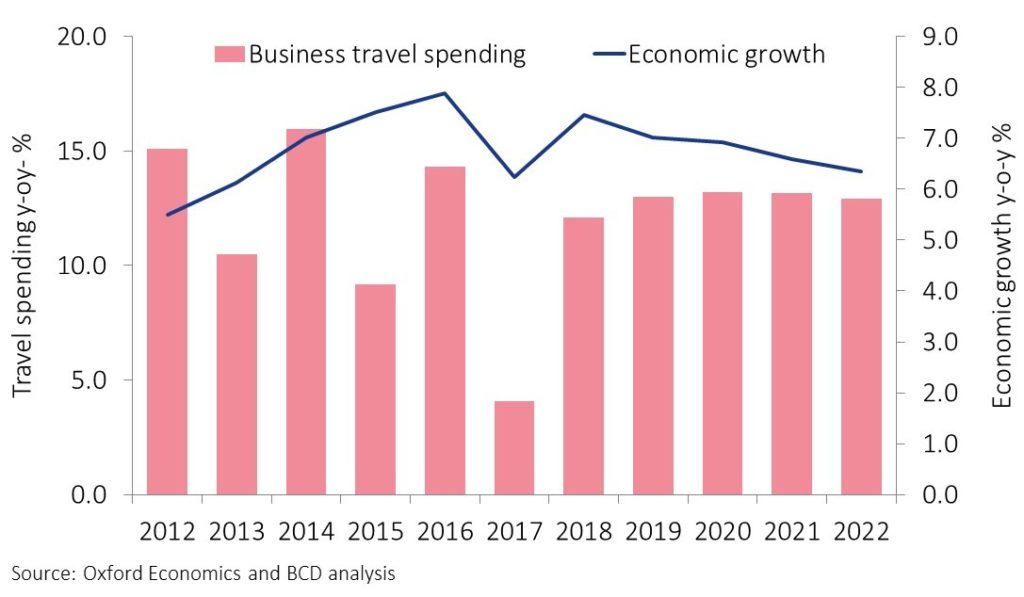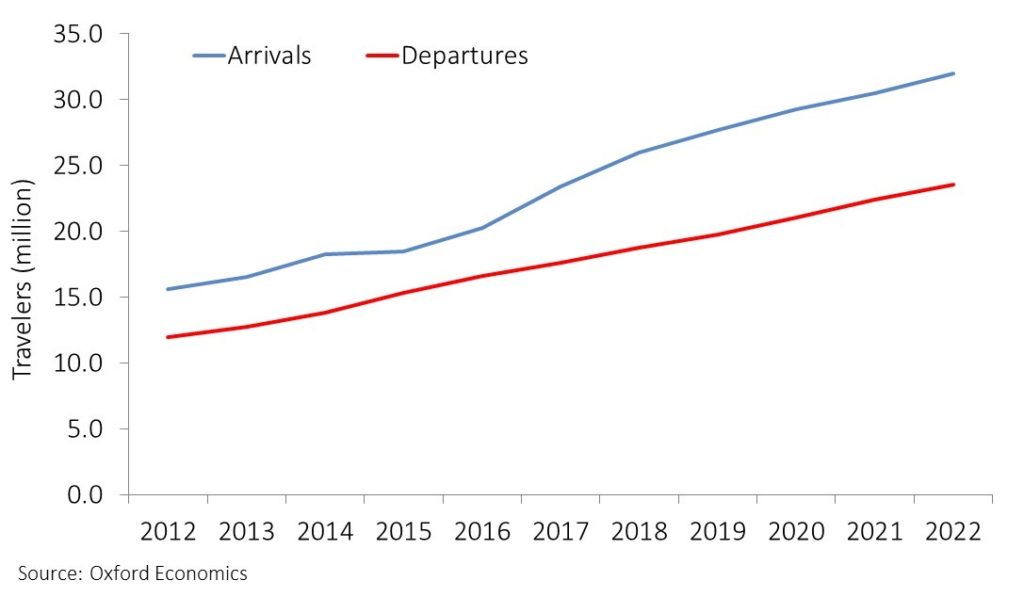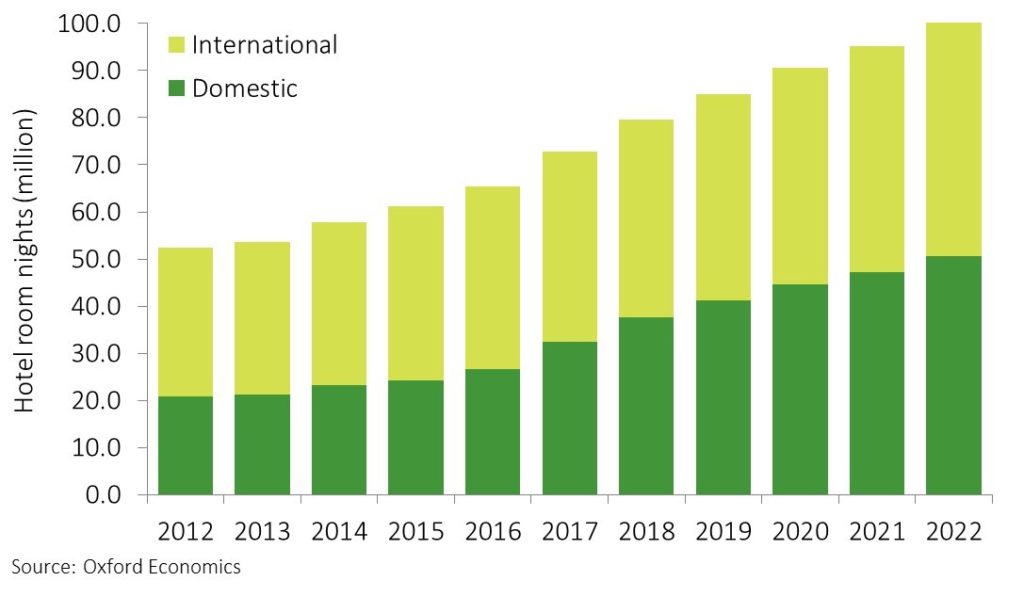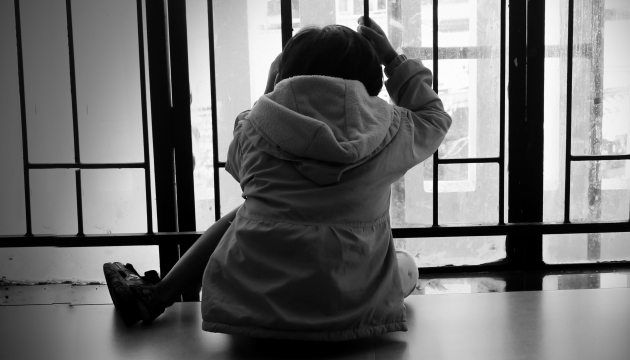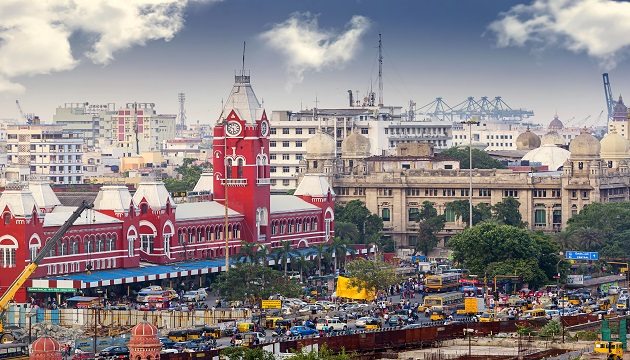
India at a glance
Travel spending is forecast to rise 13% through 2022.
India’s business travel market was worth almost US$17 billion (close to 1.1 trillion Indian rupees) in 2017, according to BCD Travel analysis of Tourism Economics data. Domestic travelers account for half of spending; outbound travelers account for a third. The strong Indian economy supported a rise in travel spending of almost 11% per year, on average, from 2012 to 2017. Growth is expected to average 13% a year through 2022, with domestic travel growing 14% per year and inbound and outbound travel increasing 11%.
Economic environment
Economic growth and business travel spending
- India transitioned from an agricultural to a service-based economy without undergoing a significant period of industrialization.
- Economic growth was 7.9% in 2016, but a global trade slowdown, lingering disruption from a government demonetization effort in 2016 and introduction of a goods and services tax pulled growth back to 6.2% in 2017.
- In 2018, growth is forecast to hit 7.5%, as consumer spending recovers from the shock of demonetization; private business investment continues to rise; and the government spends more on infrastructure. Demonetization, the new goods and services tax and initiatives like digital tax payments have boosted government revenues for public projects.
- Oxford Economics predicts growth will slow to 6.4% by 2022.
Air
International travel
- International travel to and from India rose 8% a year, on average, between 2012 and 2017. The growth in travel was fueled by infrastructure investment projects; tourism-friendly visa policies (such as extension of the e-Tourist Visa to 150 countries); and the mobility of India’s rising middle class. Economists predict international travel will lose momentum from 2018 to 2022, slowing to 6% per year.
- The most popular overseas destination for Indian travelers is the United Arab Emirates, accounting for 13% of departures today and estimated to account for 15% by 2022.
- Low-cost carriers enjoy a 66% share of the domestic air travel market, according to India’s Directorate General of Civil Aviation. IndiGo is the market leader, owning 40% of the market. GoAir, SpiceJet and AirAsia India are also major low-cost carriers.
- Competition is intensifying as AirAsia India and full-service carrier Vistara build up domestic operations before planned launches of international service later this year.
Accommodation
Hotel demand
- Indian Hotels Company Ltd. (IHCL), the hospitality business of Tata Group, is India’s largest hotel chain with 125 properties. Its main business is Taj Hotels, which has 83 properties across the luxury Taj, upper upscale Vivanta by Taj and upscale The Gateway brands. IHCL is also rapidly expanding its budget chain, Ginger Hotels.
- Radisson Hotel Group, Louvre Hotels Group and Marriott compete for second place. Wyndham and Steigenberger are among international chains with plans to expand in India.
- Between 2012 and 2017, demand for hotel accommodation increased by almost 40%, according to Oxford Economics. International travelers drove the growth with an almost 60% rise in room nights.
- The strength of demand will push hotel rates up 3%-5% in 2018, according to BCD Travel’s 2018 Industry Forecast.
